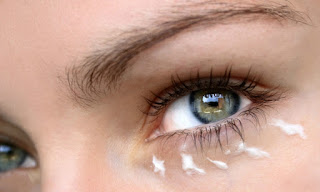Advancing Eye Surgery with Hyaluronic Acid
The eyes are extremely complex objects within the human body, and therefore eye surgeries are very difficult to perform; hyaluronic acid helps to make the process a lot easier. Your eyes require a very specific set of circumstances to operate at optimal capacity. For example, they need to be lubricated all the time to be able to turn around quickly and efficiently. They also need to be filled with a liquid to maintain an optimal internal environment. Hyaluronic acid is responsible for a lot of this - without hyaluronic acid, everything starts to break down. Hyaluronic acid is the main lubricant and a very important component of the jelly-like substance within the eye. Due to its natural uses in maintaining proper eye functionality, HA is being used to improve eye surgery outcomes.
The eyes contain even more hyaluronic acid than your joints, which signifies that the compound has a heavy role to play in their normal functioning. Experts have researched the effects of using a variety of chemicals during eye surgeries to prevent side-effects or make the surgery go smoother. One of the many compounds used to achieve this is hyaluronic acid for eyes– although HA, in particular, is completely safe, non-toxic, and natural. Hyaluronic acid is used in many procedures including cataract surgery, vitreous detachment, and corneal transplantation.
The vitreous humor is a gel-like substance which fills our eyes acting as a very important structural component. Of this component, there are some major sub-components including water, medical grade hyaluronic acid, and collagen. The collagen and HA bind together to make an intricate structure which functions – under normal circumstances - to keep the eye stable. Since HA is so substantial to the inside eye, it is commonly injected during surgeries which would cause internal fluid to leak. Hyaluronic acid can be used to replace the lost vitreous humor and eventually serve as a component to new vitreous humor in the future.
Hyaluronic acid is being used in cataract surgery to cushion the negative impacts on what is known as corneal epithelial cells – a layer of cells lining the inner cornea. Before hyaluronic acid was administered during these surgeries, the cornea’s epithelial cell count would drop an astonishing 45% post-surgery. After a scientist found that HA worked wonders on rabbit test subjects, the chemical was put on trial in South Africa. The results were absolutely remarkable, with only a 9% cell loss compared to the prior 45% cell loss without HA. After these results were confirmed, cataract surgery techniques and devices were immensely improved. Radical surgeries were undertaken and completed without the destructive side-effects which would occur without hyaluronic acid.
Not only does HA do a lot to actively aid in the process of many eye surgeries, but it also serves as a passive component which merely sustains intra-ocular conditions. Either way, HA has allowed scientists to bring the field of eye surgery to the next level by offering safe, useful, and tested benefits. It has given professionals a lot of room to experiment due to its wide-ranging benefits with respect to the eyes.
For more information, please visit https://www.stanfordchem.com/
The eyes contain even more hyaluronic acid than your joints, which signifies that the compound has a heavy role to play in their normal functioning. Experts have researched the effects of using a variety of chemicals during eye surgeries to prevent side-effects or make the surgery go smoother. One of the many compounds used to achieve this is hyaluronic acid for eyes– although HA, in particular, is completely safe, non-toxic, and natural. Hyaluronic acid is used in many procedures including cataract surgery, vitreous detachment, and corneal transplantation.
The vitreous humor is a gel-like substance which fills our eyes acting as a very important structural component. Of this component, there are some major sub-components including water, medical grade hyaluronic acid, and collagen. The collagen and HA bind together to make an intricate structure which functions – under normal circumstances - to keep the eye stable. Since HA is so substantial to the inside eye, it is commonly injected during surgeries which would cause internal fluid to leak. Hyaluronic acid can be used to replace the lost vitreous humor and eventually serve as a component to new vitreous humor in the future.
Hyaluronic acid is being used in cataract surgery to cushion the negative impacts on what is known as corneal epithelial cells – a layer of cells lining the inner cornea. Before hyaluronic acid was administered during these surgeries, the cornea’s epithelial cell count would drop an astonishing 45% post-surgery. After a scientist found that HA worked wonders on rabbit test subjects, the chemical was put on trial in South Africa. The results were absolutely remarkable, with only a 9% cell loss compared to the prior 45% cell loss without HA. After these results were confirmed, cataract surgery techniques and devices were immensely improved. Radical surgeries were undertaken and completed without the destructive side-effects which would occur without hyaluronic acid.
Not only does HA do a lot to actively aid in the process of many eye surgeries, but it also serves as a passive component which merely sustains intra-ocular conditions. Either way, HA has allowed scientists to bring the field of eye surgery to the next level by offering safe, useful, and tested benefits. It has given professionals a lot of room to experiment due to its wide-ranging benefits with respect to the eyes.
For more information, please visit https://www.stanfordchem.com/



Comments
Post a Comment